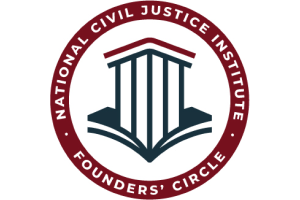Client Reviews
Nail Gun Accidents
Anyone who has ever worked on a construction site has at some point likely seen or even worked with a nail gun.
These tools are extremely helpful in terms of boosting productivity by allowing workers to place nails much faster than it would take with a hammer and a swing. They are powerful, easy-to-operate and are mostly used to aid in residential construction projects.
However, construction injury lawyers at Associates and Bruce L. Scheiner, Attorneys for the Injured, know these tools are also extremely dangerous, accounting for an estimated 37,000 hospital emergency room visits every year. In some cases, these injuries even lead to death.
One study analyzing nail gun injuries of residential carpenter apprentices indicated 2 out of 5 were hurt by a nail gun at some point over the four-year study period. One out of every 5 workers was actually injured twice. Ten percent were injured three times or more by nail guns.
That same study found the most common nail gun bodily injury sites were:
- Hands and fingers (more than half)
- Leg
- Knee
- Thighs
- Foot
- Toes
Less frequently, injuries reported to the wrist, forearm, neck, trunk and head. Those that were most serious involved nail gun injuries to the head, spinal cord, neck, eye, internal organs and bones. More serious incidents resulted in bone fractures, blindness, paralysis, brain damage and even death.
Nail gun injuries account for nearly 4 percent of all workers’ compensation claims, and roughly 25 percent of those involved lost work time.
Doctors and nurses who have treated patients who sustained a nail gun injury have noted that they resemble injuries that might be seen in a shotgun blast. It’s not hard to see why when you learn, as the CDC reported, nail guns can shoot a three-inch nail more than 100 miles-per-hour, which is 150 feet per second. When that impact occurs up close, as it often does, it can cause serious injury.
Depending on the circumstances, liability may be imposed on the job site owner, the general contractor, one or more subcontractors and possibly the maker of the nail gun. Our professional legal team is prepared to answer your questions about various options to pursue compensation.
Understanding the Triggers
The use of both pneumatic and explosive cartridge-activated nail guns is common on construction sites. Pneumatic guns, also referred to as “air guns,” use air pressure to create intense force necessary to drive nails into solid materials such as concrete, metal or wood. Explosive nail guns, meanwhile, are sometimes referred to as “gas nail guns,” because they use flammable fuel such as butane or liquid petroleum, stored in a battery, for the same purpose. Explosive nail guns are typically cordless.
There are a number of different types of triggers on nail guns, and workers should be trained to handle the specific type with which they plan to work. Although some nail guns have switches that give the user the option of choosing one of several trigger options, there are four basic types of triggers:
- Full Sequential Trigger
- Contact Trigger
- Single Sequential Trigger
- Single Actuation Trigger
The safest type is generally regarded as the full sequential. It will only fire a nail when all controls are initiated in a step-by-step order. Other types can be used safely, but it’s imperative for contractors to carefully examine the manual and label on the tools for specific instructions.
Common Causes of Nail Gun Injuries
In a recent publication outlining nail gun safety, the U.S. Occupational Health & Safety Administration outlined the seven major risk factors for nail gun injuries.
These include:
- Unintended discharge from double-fire. This happens with contact triggers.
- Accidental discharge of the nail by knocking the safety contact with the trigger squeezed. This happens with single actuation and contact triggers.
- Penetration of the nail through a wood work piece. This occurs with all types of triggers.
- Ricochet of a nail after it hits metal or other hard surface. All trigger types.
- Missing the work piece. All trigger types.
- Awkward nail positioning. Especially common in single actuation and contact triggers.
- Not using the proper safety mechanisms. All trigger types.
Nail Gun Injury Prevention
The two main things companies can do to prevent worker injuries is to provide a full sequential trigger nail gun to workers, and to make sure workers are adequately trained in proper use of the tool. Even experienced workers should be given hands-on instruction on the actual nail gun that’s going to be used on site.
Employers should also make sure user manuals are always nearby and that the tools have been inspected before each use to ensure proper working order. If a tool is broken or malfunctioning, it should be taken immediately out of service. In cases where workers might be using the gun at heights or in awkward positions, employers should allow extra time for completion of projects.
Finally, personal protection equipment should always be given to workers. These include hard hats, high impact eye protection and hearing protection.
Workers who have suffered nail gun injury on a construction project should contact our experienced Fort Myers injury lawyers to learn more about protecting their rights.
Contact Associates and Bruce L. Scheiner, Attorneys for the Injured, for a free and confidential consultation to discuss your rights. There are no fees or costs unless we win. Offices in Fort Myers, Cape Coral, Naples and Port Charlotte.
Call 800-646-1210 for a Free Consultation












